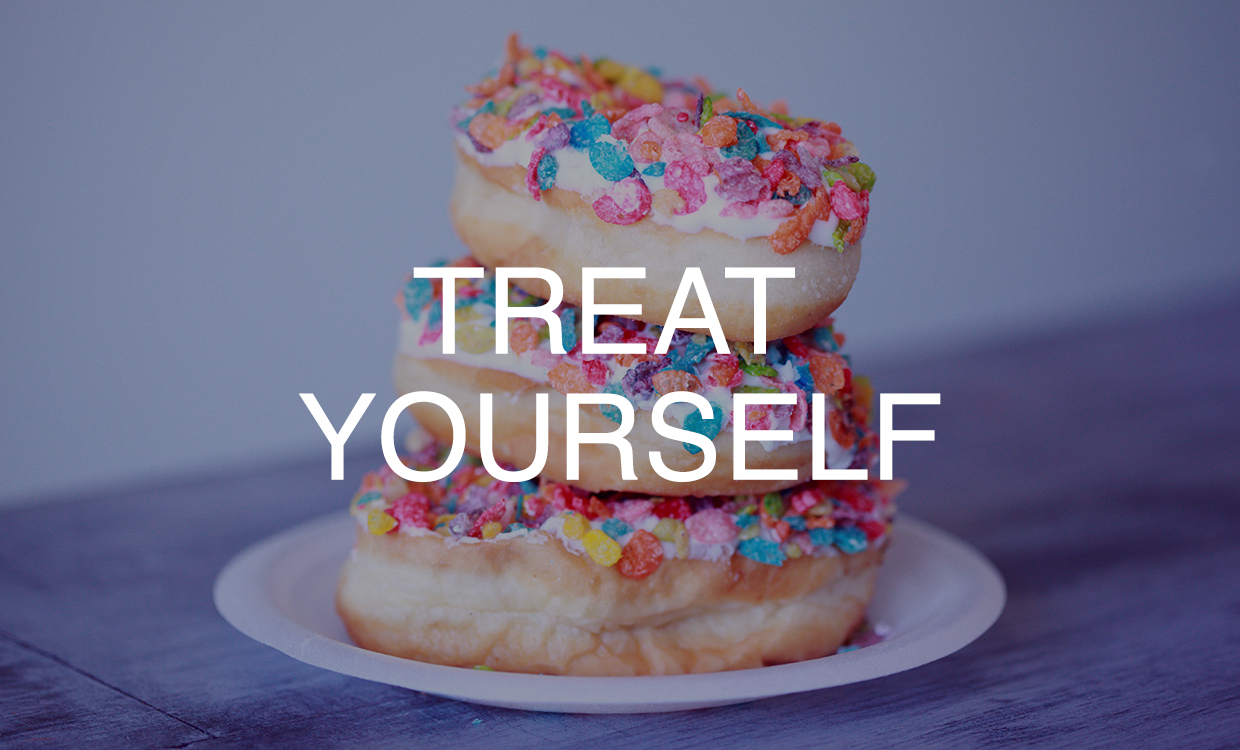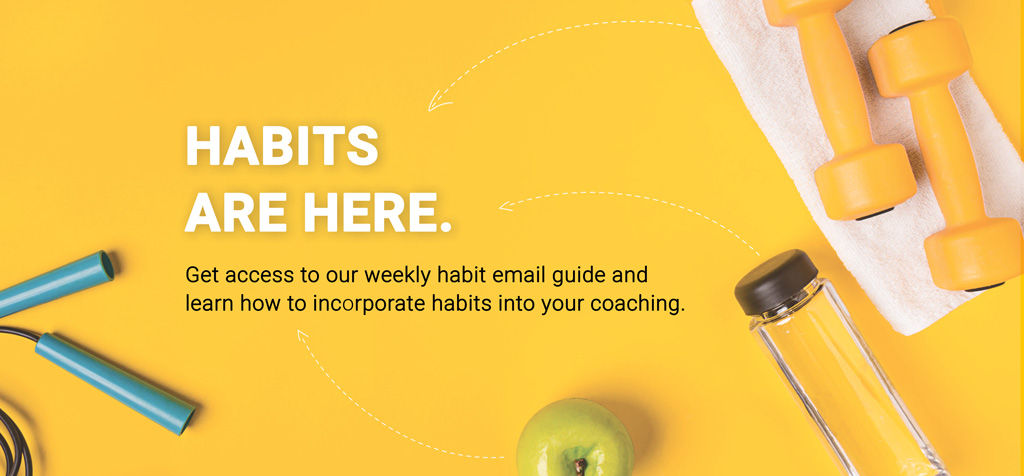We know that repetition is key to success when it comes to building positive habits and changing bad ones. We also know that it’s this exact repetition that builds up automaticity, which is often what keeps us on track, even without our even realizing it. But it takes time and effort to get to that point and, well…practicing a habit a few times is one thing, but sticking with it is another.
So how do we buckle down and power through those rinse and repeat cycles long enough to hardwire our healthy habits?

Keep Motivation High
According to psychologists and habit-coaching experts, there are a number of methods you can try, but among the most popular are those that take a motivation-first approach. Methods of this variety encourage individuals to identify a true and steadfast motivator that can continuously inspire them to practice and maintain their good habits. It’s all about finding your “true motivation” and using that to propel you forward.
As previously discussed in part 3 of this series, finding your “true motivation” can be a bit tricky, but once located, it can be a real game-changer. Author and psychologist, Michelle Segar, encourages individuals to look for motivators that are a) deeply personal to them (as in, the habit will provide direct benefit to yourself and your own goals) and b) offer “immediate gratification” rather than ones that are hypothetical or rooted in the future.
By doing these two things, individuals can identify a motivator that’s meaningful enough to help them see their healthy habits through.
To learn more about choosing the right motivators, head back to Part 3: Making Habits and Breaking Habits.

Make Fitness/Nutrition/Healthy Stuff Fun Again
We’ve probably all heard people talk about how much they love working out. Or how good they feel when they’ve eaten a healthy meal, or finished a calming meditation session…or given up caffeine…or [insert every other healthy habit here]. And unless you’re among those who have already found the “joy” of healthy living, you’ve probably rolled your eyes or sneered at the sentiment. Maybe you even thought, “What joy?”
While we’ve all questioned the sanity of the friend babbling ecstatically about how they’ve given up sugar and started CrossFit training and are just “so addicted to it!”, the truth is, these people riding the healthy living high are on to something—and it’s exactly the thing that will keep them on the straight and narrow.
It’s simple, really. We avoid the things we don’t enjoy, and if we don’t like giving up our sweet treats or getting our sweat on, well, we aren’t going to do it. That means, in order to make the leap to healthier habits, we need to find a way to make fitness, nutrition, and other healthy habits fun or at least enjoyable.
Obvious solution number one is to look for the physical activities you already enjoy and use them as your exercise; or find the healthy foods you already love and eat more of them and less of other things. If you like going to long walks, do that! Don’t drag yourself through a Zumba class you’ll hate. If you are a fan of fresh summer strawberries, try packing some as a snack instead of chomping on some cookies midday. Don’t force-feed yourself kale or hemp seeds.
By doing the healthy things you already enjoy, you eliminate some (possibly many) of the mental barriers and negative emotions around exercise and nutrition and you start to gain satisfaction from your activities.
This sense of “satisfaction” is, according to some psychologists, critical to building lasting habits. After all, trying to force yourself to do something you’re dissatisfied with no matter how good for you it is can just feel like you’re banging your head against a wall.

To Treat Yourself or Not to Treat Yourself. That Is the Question.
You’ve probably heard that using rewards is a great way to encourage clients to adopt healthier habits and nurture their fitness-focused lifestyles, and it’s true! Giving your clients permission to enjoy a pick-me-up post sweat session can help make exercise more enjoyable and help clients get over the initial hurdle of starting their fitness journey. But do rewards help yield long-term results?
To answer this question we need to dig a bit deeper into the psychological method known as “operant conditioning” (you might recall that we talked about another kind of conditioning—classical conditioning—in an earlier installment of this series).
Where classical conditioning supports changes in behavior by associating a specific stimulus or cue with an action that should follow (remember Pavlov’s dogs who salivated every time they heard a bell because they associated the bell with food?), operant conditioning works by using a system of rewards or punishments (also referred to as positive or negative reinforcement) to either encourage or discourage and thereby modify behaviors.
For example, to encourage a positive habit of going to the gym, a client might give themselves permission to eat a cookie post-workout, or they might allow themselves to watch an episode of their favorite TV show only after coming home from the gym. This positive reinforcement would—you guessed it!—reinforce the behavior and help encourage them to repeat it.
The question is how long does this work? Unfortunately, while we don’t have a specific time, the general answer is: not very long.
According to research, rewards can have limited effectiveness, meaning that they will only motivate us for so long. If we rely on rewards too heavily or too often, we can easily become accustomed to them or lose the pleasure we once associated with them. Psychologists believe this is because rewards are considered “extrinsic”. In other words, they’re not an essential or natural part of a fitness journey.
When you use rewards, you aren’t performing the habit for the habit’s (or its larger goal’s) sake; you’re doing it to get the goods or avoid them. This is counterproductive to what we’re trying to achieve and undermines the whole idea of getting innate satisfaction out of your activities (discussed earlier).
You might be thinking, but wait! You also mentioned negative reinforcement or punishments as part of operant conditioning. Will that offer longer-term motivation?
You’re right! Negative reinforcement is the other side of the operant conditioning coin so to speak. Using this method, instead of opting for rewards, you can also try to modify behavior by implementing punishments when a behavior is not performed. For example, a client could deny themselves dessert or use of their phone if they didn’t complete their workout. Or, they could force themselves to do burpees anytime they indulged a little. (Note that psychologists distinguish between negative reinforcement and punishments, but for the sake of simplicity, we’re going to speak of them as one and the same.)
Unfortunately, just like its positive counterpart, negative reinforcement isn’t a long-term solution.
Studies have shown that while negative reinforcement or punishments can lead to quicker changes to a person’s behavior, but that these changes don’t last and can peter out over just a short time. (Not exactly conducive to habit formation!)
How long the behavior change lasts depends largely on the nature or severity of the negative reinforcement (think paying $1 for every workout missed versus paying $50 for every workout missed). Again, researchers chalk this up to the “extrinsic” nature of negative reinforcement, and the fact that, as humans, we’re hardwired to try and avoid discomfort, so only the most regimented and disciplined of individuals will be able to consistently and continuously punish themselves for poor choices.
All that said, while positive and negative reinforcement might not last a lifetime as a motivator, they might still have a place in kickstarting a client’s journey to good habits. While research shows how long the effects of reinforcement last depends on a whole host of factors including a person’s age, their preferred motivation style, the type of behavior that we’re trying to modify, and the nature of the reinforcement being used, they work just long enough to get clients into a routine and on their way to automaticity.

Say Hello to Accountability
So, if you aren’t doling out rewards or punishments, what should you be doing to keep your clients making progress and pushing forward? In truth, sometimes being there is enough.
Why? Because you’re teaching your clients about accountability.
Consider that as children, most of us are taught to take responsibility for our actions and make good decisions by being under the watchful eye of an authority figure. Depending on the situation or context, that could be a parent, a teacher, Santa Claus, God, Big Brother, or even a fairy godmother—and different though these figures might be, they all share the common trait of holding us accountable.
By being a watchful eye for your clients, you’re playing the same role. They know you can see when they’ve missed a workout, blown your nutrition plan, or given in to your unhealthy habits, and that omnipresence can be an excellent reminder for clients to stay on the straight and narrow. After all, no one wants that message from their trainer asking, “So, what happened yesterday?”
While true accountability is meant to come from within, keeping tabs on clients and letting them know when you see them slipping (and not taking any of their excuses!) is a great way to help your clients get to that independent point.
So keep an eye or two out for them, (but maybe take the Fairy Godmother approach more than the Big Brother approach on this one).
![]()
Never Stop Tracking Progress
Speaking of keeping tabs on things, another great option to keep your clients on the path to success (and one that doesn’t require you to watch their every move) is to have them track their progress.
Remember how you felt as a kid when you received a sticker for completing a task or assignment? Or maybe even how you felt the other day when you crossed something off your to-do list? It felt good, didn’t it? Of course it did! And that feeling is extremely powerful—dare we say even addictive.
And that’s excellent news for habit formation.
Research has shown that tracking progress (and not just occasionally, but frequently) can actually help increase the likelihood of achieving success and that effect is even stronger if an individual records their progress physically or publicly.
Some experts theorize that this is because monitoring their progress gives your clients a sense of accomplishment and shows them they truly are capable of doing great things when they set their minds (and bodies) to it. And that can be an extremely powerful motivator.
The best part is, as progress continues, the sense of pride at how far they’ve come only grows. While their first progress check might have been to mark their first workout, think about the pride they’ll feel when they check in for workout number 100!
Encourage your clients to track their progress consistently throughout their fitness journey to leverage this powerful method for sustaining habit change.

Celebrate the Wins (No Matter How Big or Small)
What exactly is a “win”? Is it sweeping the leaderboard in a CrossFit class? Or getting out of bed and making it to the gym on a rainy and gloomy morning? Is it setting a new personal best or time record? Or packing your lunch the night before?
The truth is: they’re all wins, and anything that is a step in the right direction—no matter how big or small—is, too!
If you haven’t already guessed it, the final method for sustaining long-term habit change that we’ll be looking at is all about these wins and turning them into little milestones worth celebrating.
Let’s start with why you should do this, and we can sum it up in just two, short and sweet words: it’s motivating! Studies have shown that across all different types of tasks and scenarios, including in our work lives or occupations, acknowledging little movements toward a larger goal has a big impact on the way we feel on a daily basis and reaffirms that we are in fact making progress! This minor and incremental progress can refocus a person and keep them plodding forward, so even if it seems like a drop in the metaphorical bucket, just like with ripples, it has a much bigger impact than you’d expect.
Another reason to celebrate small wins is for the mental health and wellness of your clients. Psychiatrist, Dr David Burns talks about this in his book, Feeling Good, highlighting how identifying and celebrating small wins (and really, even just taking on a perspective that breaks larger tasks down into smaller and more manageable chunks) can greatly improve an individual’s mood and mental state, even so far as to help reduce levels of depression. Given how emotional fitness and health journeys can already be for clients, this is powerful knowledge for trainers and coaches to have.
How you celebrate is entirely up to you and your clients, but just like with the case of rewards (as discussed earlier) you want to make sure the fete isn’t undermining your client’s progress. Whatever you do, make it special, make it personal, and make it count.
In the next installment, we’re digging into how to make habit coaching part of your training methodology.
References
Frequently Monitoring Progress Toward Goals Increases Chance of Success by Americal Psychological Association
The Power of Small Wins by Teresa Amabile and Steven J. Kramer
Feeling Good by Dr David Burns
UP NEXT | PART 6: Strategy and Implementation
#SmallChangesBigResults

